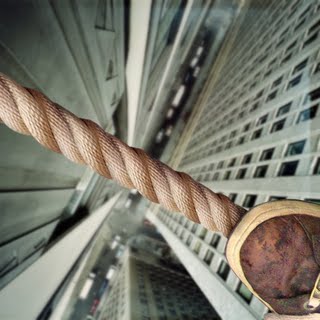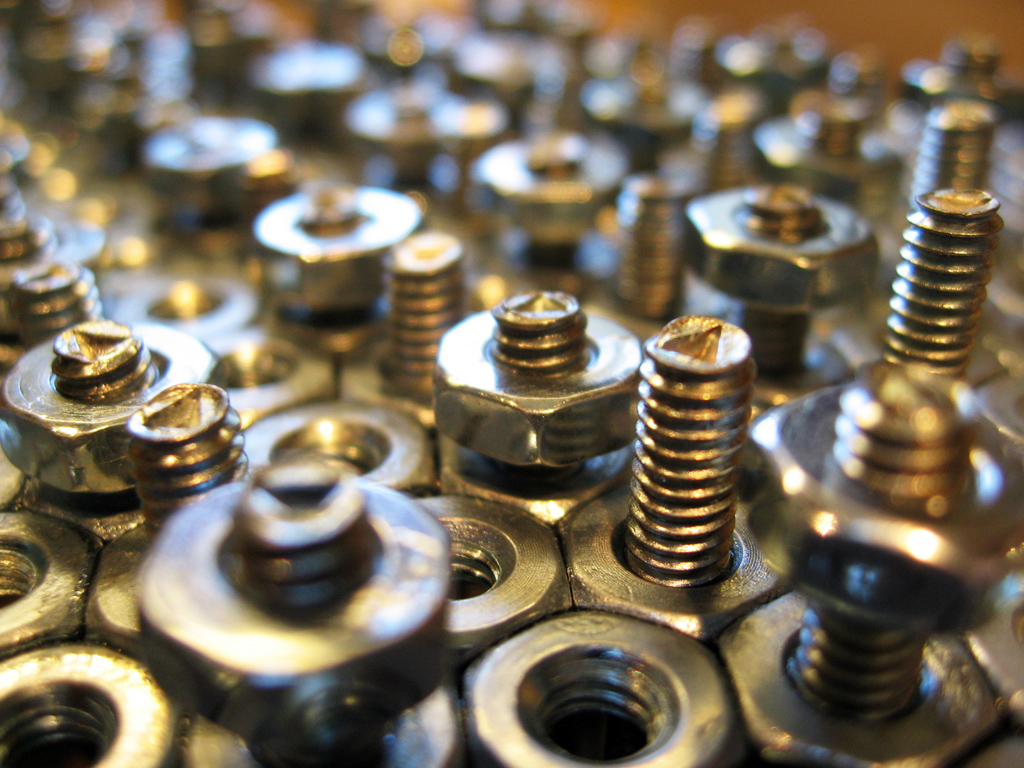Archive for February, 2010
Reducing the risk of Innovation
 Though we can’t describe it in words, or tell someone how to do it, we all know innovation is good. Why is it good? Look at the causal chain of actions that create a good economy, and you’ll find innovation is the first link.
Though we can’t describe it in words, or tell someone how to do it, we all know innovation is good. Why is it good? Look at the causal chain of actions that create a good economy, and you’ll find innovation is the first link.
When innovation happens, a new product is created that does something that no other product has done before. It provides a new function, it has a new attribute that is pleasing to the eye, it makes a customer more money, or it simply makes a customer happy. It does not matter which itch it scratches, the important part is the customer finds it valuable, and is willing to pay hard currency for it. Innovation does something amazing, it results in a product that creates value; it creates something that’s worth more than the sum of its parts. Starting with things dug from the ground or picked from it – dirt (steel, aluminum, titanium), rocks (minerals/cement/ceramics), and sticks (wood, cotton, wool), and adding new thinking, a product is created, a product that customers pay money for, money that is greater than the cost of the dirt, rocks, sticks, and new thinking. This, my friends, is value creation, and this is what makes national economies grow sustainably. Here’s how it goes.
Customers value the new product highly, so much so that they buy boatloads of them. The company makes money, so much so stock price quadruples. With its newly-stuffed war chest, the company invests with confidence, doing more innovation, selling more products, and making more money. An important magazine writes about the company’s success, which causes more companies to innovate, sell, and invest. Before you know it, the economy is flooded with money, and we’re off to the races in a sustainable way – a way based on creating value. I know this sounds too simplistic. We’ve listened too long to the economists and their theories – spur demand, markets are efficient, and the world economy thing. This crap is worse than it sounds. Things don’t have to be so complicated. I wish economists weren’t so able to confuse themselves. Innovate, sell, and invest, that’s the ticket for me.
Innovation – straightforward, no, easy, no. Innovation is scary as hell because it’s risky as hell. The risk? A company tries to develop a highly innovative product, nothing comes out the innovation tailpipe, and the company has nothing for its investment. (I can never keep the finance stuff straight. Does zero return on a huge investment increase or decrease stock price?) It’s the tricky risk thing that gets in the way of innovation. If innovation was risk free, we’d all be doing it like voting in Chicago – early and often. But it’s not. Although there is a way to shift the risk/reward ratio in our favor.
After doing innovation wrong, learning, and doing it less wrong, I have found one thing that significantly and universally reduces the risk/reward ratio. What is it?
Know you’re working on the right problem.
Work on the right problem? Are you kidding? This is the magic advice? This is the best you’ve got? Yes.
If you think it’s easy to know you’re working on the right problem, you’ve never truly known you were working on the right problem, because this type of knowing is big medicine. Innovation is all about solving a special type of problem, problems caused by fundamental conflicts and contradictions, things that others don’t know exist, don’t know how to describe, or define, let alone know how to eliminate. I’m talking about conflicts and contradictions in the physics sense – where something must be hot and cold at the same time, something must be big while being small, black while white, hard one instant, and soft the next. Solve one of those babies, and you’ve innovated yourself a blockbuster product.
In order to know you’re working on the right problem (conflict or contradiction), the product is analyzed in the physics sense. What’s happening, why, where, when, how? It’s the rule (not the exception) that no one knows what’s really going on, they only think they do. Since the physics are unknown, a hypothesis of the physics behind the conflict/contradiction must be conjured and tested. The hypothesis must be tests analytically or in the lab. All this is done to define the problem, not solve it. To conjure correctly, a radical and seemingly inefficient activity must be undertaken. Engineers must sit at their desk and think about physics. This type of thinking is difficult enough on its own and almost impossible when project managers are screaming at them to get off their butts and fix the problem. As we know, thinking is not considered progress, only activity is.
After conjuring the hypothesis, it’s tested to prove or disprove. If dis-proven, back to the desk for more thinking. If proven, the conflict/contradiction behind the problem is defined, and you know you’re working on the right problem. You have not solved it, you’ve only convinced yourself you’re working on the right one. Now the problem can be solved.
Believe it or not, solving is the easy part. It’s easy because the physics of the problem are now known and have been verified in the lab. We engineers can solve physics problems once they’re defined because we know the rules. If we don’t know the physics rules off the top of our heads, our friends do. And for those tricky times, we can go to the internet and ask Google.
I know all this sounds strange. That’s okay, it is. But it’s also true. Give your engineers the tools, time and training to identify the problems, conflicts, and contradictions and innovation will follow. Remember the engineering paradox, sometimes slower is faster. And what about those tools for innovation? I’ll save them for another time.
Looking for the next evolution of lean? Look back.
 Many have achieved great success with lean – it’s all over the web. Companies have done 5S, standard work, value stream mapping, and flow-pull-perfection. Waste in value streams has reduced from 95% to 80%, which is magical; productivity gains have been excellent; and costs have dropped dramatically. But the question on everyone’s mind – what’s next? The blogs, articles, and papers are speculating on the question and proposing theories, all of which have merit. But I think we’re asking the wrong question.
Many have achieved great success with lean – it’s all over the web. Companies have done 5S, standard work, value stream mapping, and flow-pull-perfection. Waste in value streams has reduced from 95% to 80%, which is magical; productivity gains have been excellent; and costs have dropped dramatically. But the question on everyone’s mind – what’s next? The blogs, articles, and papers are speculating on the question and proposing theories, all of which have merit. But I think we’re asking the wrong question.
Instead of looking forward for the next evolution of lean, we should look back. We must take a fundamental, base-level look at our factories, and ask what did we miss? We must de-evolve our thinking about our factories, and break down their DNA – like mapping the factory genome.
Though lean has achieved radical success, it has not achieved fundamental reduction in factory complexity. Heresy? Let me explain. Lean helped us migrate from batch building to single piece flow. With batch building, a group of parts are processed at machine A, then, when all are finished, the whole family moves to machine B. With single piece flow, a part is processed at machine A then she moves, without her sisters, directly to machine B, resulting in big savings. But in both cases, the fundamental part flow, a surrogate for factory complexity, remains unchanged – parts move from machine A to machine B. Lean did not change it. Lean has taken the bends out of our factory flow and squeezed machines together, but that’s continuous improvement. We’ve got good signals, we’ve got cell-based metrics, and 15 minute pitches. Again, continuous improvement. But what about discontinuous improvement? How can we fundamentally reduce factory complexity?
Factories are what they are because of the parts flowing through them.
Factory flow and complexity are governed by the genetics of the parts. In that way, parts are the building blocks of the factory genome. From the machines and tools to the people, handling equipment, and the incoming power – they’re all shaped by the parts’ genetics. Heavy parts, heavy duty cranes; complex parts, complex flows; big parts, big factories. When we want to make a fundamental change in bacteria to make a vaccine, we change the genetics. When we want to make a fruit immune to a natural enemy or resistant to cold of an unnatural habitat, we change the genetics. So, it follows, if fundamental change in factory complexity is the objective, the factory genome should change.
Don’t try to simplify the factory directly, change the parts to let the factory simplify itself.
Discontinuous reduction of factory complexity is the result of something – changing the products that flow through the factory. Only design engineers can do that. Only design engineers can eliminate features on the design so machine B is not required. Only design engineers can redesign the product to eliminate the part altogether – no more need for machine A or B. In both cases, the design engineer did what lean could not.
Lean is a powerful tool, and I’m an advocate. But we missed an important part of the lean family. We drove right by. We had the chance to engage the design community in lean, but we did not. Let’s get in the car, drive back to the design community, and pick them up. We’ll tell them anything they want to hear, just as long as they get in the car. Then, as fast as we can, we’ll drive them to the lean pool party. Because as Darwin knew, diversity is powerful, powerful enough to mutate lean into a strain that can help us survive in the future.
Engineers and Change?
 As an engineering leader I work with design engineers every day. I like working with them, it’s fun. It’s comfortable for me because I understand us. Yes, I am an engineer.
As an engineering leader I work with design engineers every day. I like working with them, it’s fun. It’s comfortable for me because I understand us. Yes, I am an engineer.
I know what we’re good at, and I know we’re not good at. I’ve heard the jokes. Some funny, some not. But when engineers and non-engineers work well together, there’s lots of money to be made. I figure it’s time to explain how engineers tick so we can make more money. An engineer explaining engineers, to non-engineers – a flawed premise? Maybe, but I’ll roll the dice.
Everyone knows why design engineers are great to have around. Want a new product? Put some design engineers on it. Want to solve a tough technical problem? Put some design engineers on it. Want to create something from nothing? Design engineers. Everyone also knows we can be difficult to work with. (I know I can be.) How can we be high performing in some contexts and low performing in others? What causes the flip between modes? Understanding what’s behind this dichotomy is the key to understanding engineers. What’s behind this? In a word, “change”. And if you understand change from an engineer’s perspective, you understand engineers. If you remember just one sentence, here it is:
To engineers, change equals risk, and risk is bad.
Why do we think that way? Because that’s who we are; we’re walking risk reduction machines. And that’s good because in this time of doing more, doing it with less, and doing it faster, companies are taking more risk. Engineers make sure risk is always part of the risk-reward equation.
The best way to explain how engineers think about change and risk is to give examples. Here three examples.
Changing a drawing for manufacturing
Several months after product launch, with things running well, there is a request to change an engineering print. Change the print? That print is my recipe. I know how it works and when it doesn’t. That recipe works. My job is to make sure it works, and someone wants to change it? I’m not sure it will work. Did I tell you it’s my job to make sure it works? I don’t have time to test it thoroughly. Remember, when I say it will work, you expect that it will. I’m not sure the change will work. I don’t want to take the risk. Change is risk.
Changing the specification
This is a big one. Three months into a new product development project, the performance specification is changed, moving it north into unknown territory. The customer will benefit from the increased performance, we understand this, but the change created risk. The knowledge we created over the last three months may not be relevant, and we may have to recreate it. We want to meet the new specification (we’re passionate about product and technology), but we don’t know if we can. You count on us to be sure that things will work, and we pride ourselves on our ability to do that for you. But with the recent specification change, we’re not sure we can get it done. That’s risk, that’s uncomfortable for us, and that’s the reason we respond as we do to specification changes. Change is risk.
Changing how we do product development
This is the big one. We have our ways of doing things and we like them. Our design processes are linear, rational, and make sense (to us). We know what we can deliver when we follow our processes; we know about how long it will take; and we know the product will work when we’re done. Low risk. Why do you want us to change how we do things? Why do you want to add risk to our processes? All we’re trying to do is deliver a great product for you. Change is risk.
Engineers have a natural bias toward risk reduction. I am not rationalizing or criticizing, just explaining. We don’t expect zero risk; we know it’s about risk optimization and not risk minimization. But it’s important to keep your eye on us to make sure our risk pendulum does not swing too far toward minimization. The great American philosopher Mae West said, “Too much of a good thing can be wonderful.” But that’s not the case here.
When it comes to engineers and risk reduction, too much of a good thing is not wonderful.
Fasteners Can Consume 20-50% of Assembly Labor
 The data-driven people in our lives tell us that you can’t improve what you can’t measure. I believe that. And it’s no different with product cost. Before improving product cost, before designing it out, you have to know where it is. However, it can be difficult to know what really creates cost. Not all parts and features are created equal; some create more cost than others, and it’s often unclear which are the heavy hitters. Sometimes the heavy hitters don’t look heavy, and often are buried deeply within the hidden factory.
The data-driven people in our lives tell us that you can’t improve what you can’t measure. I believe that. And it’s no different with product cost. Before improving product cost, before designing it out, you have to know where it is. However, it can be difficult to know what really creates cost. Not all parts and features are created equal; some create more cost than others, and it’s often unclear which are the heavy hitters. Sometimes the heavy hitters don’t look heavy, and often are buried deeply within the hidden factory.
Measure, measure, measure. That’s what the black belts say. However, it’s difficult to do well with product cost since our costing methods are hosed up and our measurement systems are limited. What do I mean? Consider fasteners (e.g., nuts, bolts, screws, and washers), the product’s most basic life form. Because fasteners are not on the BOM, they’re not part of product cost. Here’s the party line: it’s overhead to be shared evenly across all the products in a socialist way. That’s not a big deal, right? Wrong. Although fasteners don’t cost much in ones and twos, they do add up. 300-500 pieces per unit times the number of units per year makes for a lot of unallocated and untracked cost. However, a more significant issue with those little buggers is they take a lot of time attach to the product. For example, using standard time data from DFMA software, assembly of a 1/4″ nut with a bolt, locktite, a lockwasher, and cleanup takes 50 seconds. That’s a lot of time. You should be asking yourself what that translates to in your product. To figure it out, multiply the number nut/bolt/washer groupings by 50 seconds and multiply the result by the number of units per year. Actually, never mind. You can’t do the calculation because you don’t know the number of nut/bolt/washer combinations that are in your product. You could try to query your BOMs, but the information is likely not there. Remember, fasteners are overhead and not allocated to product. Have you ever tried to do a cost reduction project on overhead? It’s impossible. Because overhead inflicts pain evenly to all, no one is responsible to reduce it.
With fasteners, it’s like death by a thousand cuts.
The time to attach them can be as much as 20-50% of labor. That’s right, up to 50%. That’s like paying 20-50% of your folks to attach fasteners all day. That should make you sick. But it’s actually worse than that. From Line Design 101, the number of assembly stations is proportional to demand times labor time. Since fasteners inflate labor time, they also inflate the number of assembly stations, which, in turn, inflates the factory floor space needed to meet demand. Would you rather design out fasteners or add 15% to your floor space? I know you can get good deals on factory floor space due to the recession, but I’d still rather design out fasteners.
Even with the amount of assembly labor consumed by fasteners, our thinking and computer systems are blind to them and the associated follow-on costs. And because of our vision problems, the design community cannot be held accountable to design out those costs. We’ve given them the opportunity to play dumb and say things like, “Those fastener things are free. I’m not going to spend time worrying about that. It’s not part of the product cost.” Clearly not an enlightened statement, but it’s difficult to overcome without cost allocation data for the fasteners.
The work-around for our ailing thinking and computer-based cost tracking systems is simple: get the design engineers out to the production floor to build the product. Have them experience first hand how much waste is in the product. They’ll come back with a deep-in-the-gut understanding of how things really are. Then, have them use DFMA software to score the existing design, part-by-part, feature-by-feature. I guarantee everyone will know where the cost is after that. And once they know where the cost is, it will be easy for them to design it out.
I have data to support my assertion that fasteners can make up 20-50% of labor time, but don’t take my word for it. Go out to the factory floor, shut your eyes and listen. You’ll likely hear the never ending song of the nut runners. With each chirp, another nut is fastened to its bolt and washer, and another small bit of labor and factory floor space is consumed by the lowly fastener.
 Mike Shipulski
Mike Shipulski